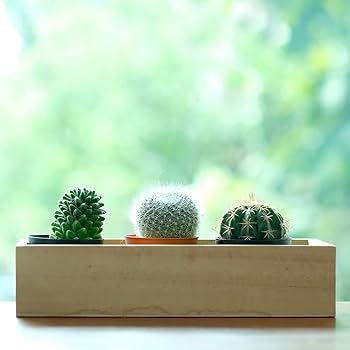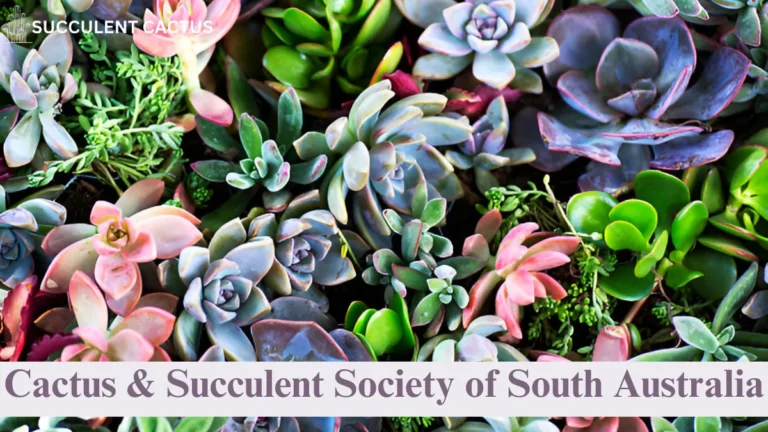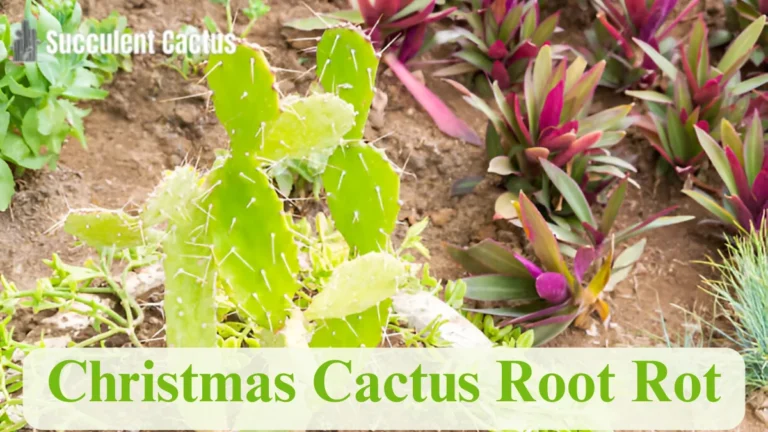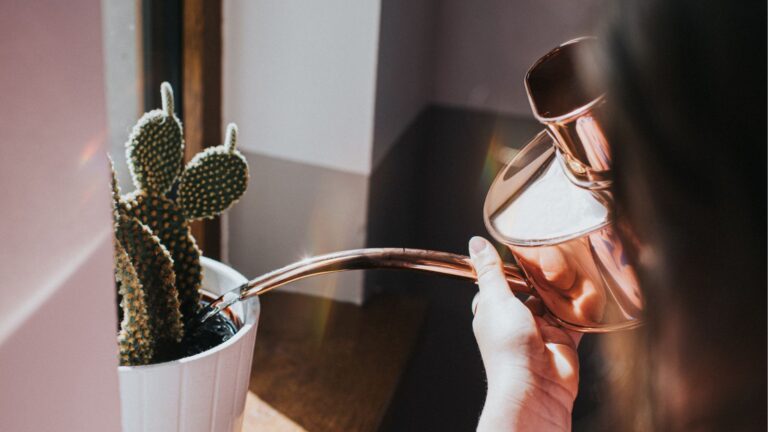What Does a Succulent Cactus Look Like? Exploring Succulents That Look Like Cactus
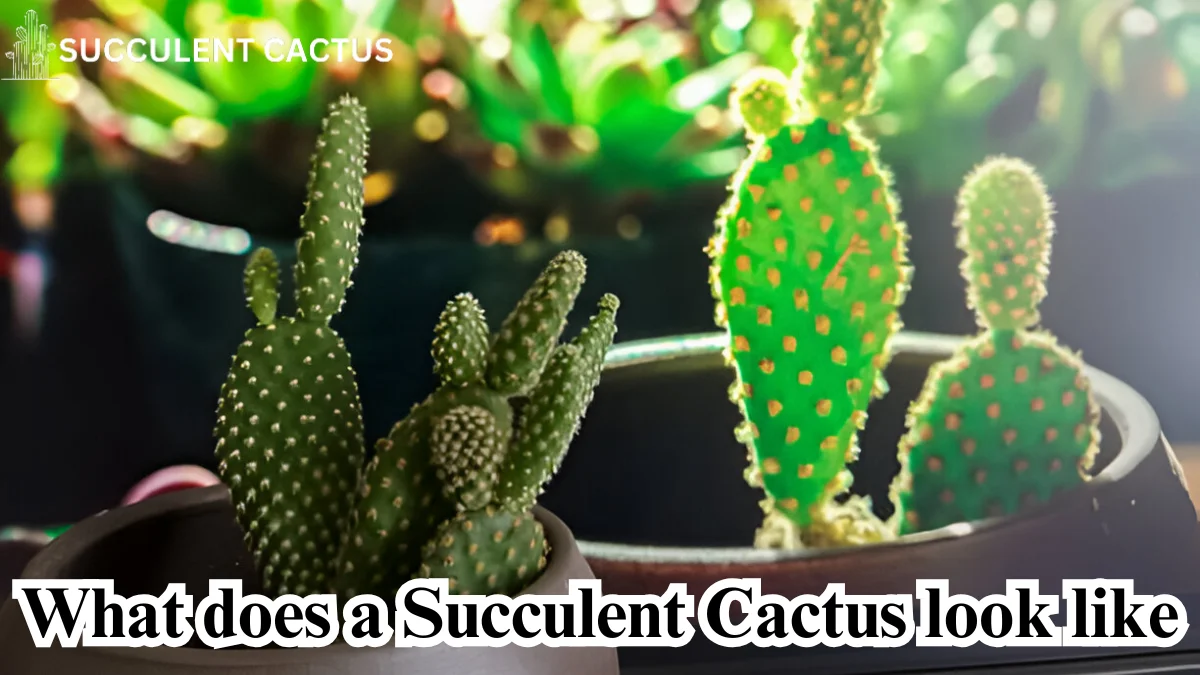
Succulents and cacti are among the most extraordinary plants in the natural world, boasting unique adaptations and captivating aesthetics. While they share certain similarities, not all succulents are cacti, and some succulents mimic cacti in appearance. This comprehensive guide explores what a succulent cactus looks like and delves into the fascinating world of succulents that look like cactus, highlighting their defining characteristics, types, care requirements, and more.
1. What Does a Succulent Cactus Look Like?
Defining a Succulent Cactus
Succulent cacti are a subgroup of succulents belonging to the Cactaceae family. These plants are distinguished by their ability to store water in their thick, fleshy tissues. This adaptation enables them to thrive in arid, desert environments. Unlike other succulents, cacti feature areoles, which are small, cushion-like structures unique to the Cactaceae family. Areoles produce spines, flowers, and new growth, making them a definitive characteristic of all true cacti.
| Feature | Description |
| Areoles | Cushion-like structures producing spines and flowers |
| Thick Stems | Designed for water storage |
| Spines | Replace leaves to reduce water loss and provide protection |
Cacti vary significantly in size and shape. The saguaro cactus (Carnegiea gigantea), for example, grows up to 40 feet tall and is iconic in the deserts of the American Southwest. On the other end of the spectrum, the blossfeldia genus includes cacti that are just an inch in diameter. These remarkable plants have evolved to survive some of the harshest conditions on Earth.
Distinguishing Features of Succulent Cacti
Succulent cacti possess several distinctive traits:
- Spines Instead of Leaves: Most cacti lack traditional leaves, which minimizes water loss through transpiration. The spines also serve as a defense mechanism against predators.
- Ribbed or Columnar Stems: These allow the plant to expand and store more water during rainy periods and contract during droughts.
- Areoles: Unique to cacti, areoles are responsible for producing spines, flowers, and even new branches. This feature sets cacti apart from all other succulents.
- Colorful Flowers: Many cacti bloom with striking flowers in shades of pink, red, yellow, or white, often attracting pollinators such as bees, bats, and hummingbirds.
Examples of Succulent Cacti
- Saguaro (Carnegiea gigantea): This iconic desert cactus is known for its tall, columnar structure and arms that branch out as it matures.
- Barrel Cactus (Ferocactus): A rounded, ribbed cactus with prominent spines and bright yellow or red flowers.
- Prickly Pear (Opuntia): Recognizable by its flat, paddle-shaped stems and edible fruits, commonly used in cooking.
These examples illustrate the incredible diversity within the world of succulent cacti.
2. Succulents That Look Like Cactus
What Sets These Succulents Apart?
Succulents that look like cacti share visual similarities, such as fleshy stems and spiny appearances, but they belong to families outside the Cactaceae. These plants lack areoles, which is the key characteristic of true cacti. Despite this, cactus-like succulents are often mistaken for cacti because of their adaptations to similar environments.
| Succulent | Cactus-Like Traits |
| Euphorbia Trigona | Tall, ribbed stems with spines |
| Stapelia | Thick, angular stems |
| Aloe Vera | Rosette growth, sharp leaf edges |
Examples of Succulents with a Succulent Cactus Look
- Euphorbia Trigona: Also known as the African Milk Tree, this plant has tall, ribbed stems with spines along its ridges. Its resemblance to a cactus makes it a popular ornamental plant.
- Stapelia (Starfish Flower): This succulent features angular, fleshy stems and produces large, star-shaped flowers. While beautiful, the blooms emit a carrion-like odor to attract pollinators like flies.
- Aloe Vera: Best known for its medicinal properties, Aloe Vera has spiny edges and a rosette growth pattern, closely resembling some cacti.
Why Choose These Succulents?
Cactus-like succulents are ideal for those who appreciate the aesthetic of cacti but want plants that are:
- Easier to Maintain: Many cactus-like succulents are more tolerant of varying environmental conditions.
- Versatile: Suitable for both indoor and outdoor cultivation.
- Aesthetic: Their unique shapes and textures add visual interest to gardens and homes.
These plants provide the best of both worlds—cactus-like beauty with easier care requirements.
How to Differentiate Between Succulent Cacti and Succulents with a Succulent Cactus Look
Key Differences
While succulent cacti and cactus-like succulents share many similarities, certain characteristics set them apart:
| Feature | Succulent Cacti | Cactus-Like Succulents |
| Family | Cactaceae | Euphorbiaceae, Asphodelaceae |
| Areoles | Present | Absent |
| Spines | True spines | Thorn-like projections |
| Flowers | Tubular, often vibrant | Varies based on species |
Morphological Features
The presence of areoles is the easiest way to identify a true cactus. In addition, succulent cacti often have ribbed stems, whereas cactus-like succulents may have smooth or ridged surfaces without areoles.
Care and Habitat
While both types thrive in arid environments, cactus-like succulents are often more adaptable to varying humidity levels, making them suitable for regions with higher moisture.
The Anatomy of Succulent Cacti
Stem Structure
The stems of succulent cacti are their primary feature, designed to retain water and endure harsh desert climates. These stems are thick, fleshy, and often ribbed or segmented. Ribbing allows the stem to expand during periods of rainfall and contract during drought without damaging the plant.
| Function | Description |
| Water Storage | Retains moisture to survive extended periods of drought. |
| Photosynthesis | Performs photosynthesis in the stem due to the absence of leaves. |
| Protection | Often coated with a waxy layer to prevent water loss and protect against UV rays. |
The waxy cuticle covering the stems minimizes evaporation, helping the cactus conserve as much water as possible.
Root System
Succulent cacti have shallow yet extensive root systems, enabling them to quickly absorb water from brief rains. Some species even develop specialized roots called fibrous roots, which spread laterally just beneath the soil’s surface to maximize water uptake.
In dry conditions, the roots can shrink to prevent energy loss, while in wetter conditions, they rapidly grow to capture available water.
Spines and Areoles
Spines are modified leaves, and their function is not just protective. They also help regulate temperature by providing shade and reducing water loss. Spines emerge from areoles, which are specialized structures found only in cacti.
| Purpose of Spines | Benefit to the Cactus |
| Defense | Protects against herbivores and predators. |
| Water Conservation | Reduces surface area to minimize water loss through transpiration. |
| Microclimate Creation | Creates a small, shaded zone that reduces the temperature near the plant’s surface. |
Why Some Succulents Have the Succulent Cactus Look
Convergent Evolution
The resemblance between cacti and some succulents is due to convergent evolution, a process where unrelated plant species develop similar adaptations to survive in similar environments. For example, both groups have evolved fleshy tissues to store water, spines for protection, and thick cuticles to reduce water loss.
- Cactus vs. Euphorbia: Euphorbia species from Africa and Madagascar evolved spiny, ribbed structures that mimic cacti, despite belonging to a different family.
- Agave vs. Cactus: Agave, a succulent from the Asparagaceae family, develops rosettes and spiny margins that resemble certain cacti.
Mimicry in Appearance
Certain succulents imitate cacti to deter predators. Their spiny appearance signals potential threats to herbivores, reducing their chances of being eaten.
| Succulent | Mimicked Cactus | Key Similarity |
| Euphorbia Trigona | Columnar cacti like saguaro | Ribbed stems and spines |
| Hoodia Gordonii | Barrel cacti | Cylindrical, fleshy stems |
Practical Uses of Mimicry
Gardeners often choose cactus-like succulents for landscaping purposes, as they offer the visual appeal of cacti while sometimes requiring less specialized care.
Care Tips for Nurturing the Ideal Succulent Cactus Look and Look-Alike Plants
Light Requirements
Succulent cacti and cactus-like succulents thrive in bright, indirect sunlight.
- Place plants in a south-facing window indoors to ensure they receive at least 6-8 hours of light daily.
- In outdoor settings, ensure partial shade during the hottest part of the day to prevent sunburn, especially for young plants.
Watering Guidelines
Proper watering is crucial for both succulent cacti and cactus-like succulents.
- Cacti: Water only when the soil is completely dry. Overwatering can lead to root rot, a common issue in cacti care.
- Cactus-Like Succulents: While they prefer dry soil, some species may tolerate slightly more frequent watering. For example, Euphorbias require slightly more hydration than true cacti.
| Season | Watering Frequency |
| Summer | Once every 2-3 weeks |
| Winter | Once every 4-6 weeks |
Soil and Fertilization
Well-draining soil is essential. Use a mix of cactus soil, sand, and perlite to prevent water retention. Fertilize sparingly with a balanced, diluted fertilizer during the growing season (spring and summer).
Common Issues with Succulent Cacti
Overwatering and Root Rot
Overwatering is the most common issue faced by succulent enthusiasts. Signs include:
- Yellowing or mushy stems.
- A foul odor emanating from the soil.
To prevent this, always use pots with drainage holes and ensure the soil dries completely between waterings.
Pest Problems
Mealybugs and spider mites are frequent pests for succulents. Use insecticidal soap or neem oil to combat infestations.
Lack of Sunlight
If succulents don’t receive enough sunlight, they may become etiolated (stretched out and weak). Move them to a brighter location and rotate them regularly for even light exposure.
Succulent Cactus Look in Landscaping
Designing a Desert Garden
Succulent cacti and cactus-like succulents are ideal for creating striking desert-themed gardens. Their unique forms and low-maintenance requirements make them perfect for xeriscaping, a landscaping style designed for dry climates.
- Grouping Plants: Combine different heights, shapes, and colors of cacti and succulents to create visual interest. For example, pair tall columnar cacti like Euphorbia trigona with rosette-forming succulents like Aloe vera.
- Use of Rocks and Gravel: Incorporate gravel, sand, and large stones for a natural desert aesthetic.
- Focal Points: Highlight a large cactus or succulent as the centerpiece, such as a golden barrel cactus or Agave americana.
| Key Features | Benefits |
| Low Water Use | Saves water, making it eco-friendly. |
| Minimal Maintenance | Requires less time and effort compared to traditional gardens. |
| Aesthetic Appeal | Unique plant shapes and textures add character to outdoor spaces. |
Using Cactus-Like Succulents in Indoor Décor
The succulent cactus look is excellent for indoor decoration, as they thrive in small spaces and low-maintenance conditions.
- Terrariums: Place smaller succulents like Haworthia or Echeveria in glass terrariums for a modern look.
- Tabletop Displays: Create a mix of succulents and cactus-like plants in shallow dishes to brighten up workspaces or living rooms.
- Vertical Gardens: Use cactus-like succulents in wall planters to create living art pieces.
Benefits of Succulent Cacti in Landscaping
- Sustainability: They require less water, reducing environmental impact.
- Durability: Understand extreme weather conditions, making them ideal for outdoor setups.
- Versatility: Can be grown in pots, rock gardens, or directly in the soil.
Medicinal and Cultural Significance
Traditional Uses
Many succulent cacti and cactus-like succulents have been used in traditional medicine for centuries.
- Aloe Vera: Known for its soothing gel, it is widely used for treating burns, cuts, and skin conditions.
- Prickly Pear Cactus: The pads and fruit are edible and used in traditional Mexican cuisine. The fruit is also rich in antioxidants and has potential blood sugar-lowering properties.
- Hoodia Gordonii: Traditionally used by indigenous tribes in Africa to suppress appetite during long hunting trips.
Spiritual and Cultural Symbolism
Succulent cacti have deep cultural meanings in various regions.
- Cacti as Protection Symbols: In many cultures, cacti are believed to ward off negative energy and bring protection.
- Feng Shui: Placing cacti near windows is thought to deflect bad energy and create a protective shield around the home.
Modern Uses
Succulent cacti and their look-alikes are increasingly being used in modern health and wellness industries.
- Skincare Products: Aloe vera is a key ingredient in moisturizers, sunscreens, and face masks.
- Dietary Supplements: Prickly pear extracts are marketed for their anti-inflammatory and antioxidant properties.
Propagation Techniques for Achieving the Perfect Succulent Cactus Look
Propagation Through Cuttings
Most succulent cacti and cactus-like succulents are easily propagated through stem or leaf cuttings.
- Choose a Healthy Plant: Select a mature stem or leaf that shows no signs of disease.
- Cut at the Base: Use a clean, sharp knife to make a clean cut.
- Dry the Cutting: Allow the cut surface to callus over for a few days to prevent rotting.
- Plant in Soil: Place the cutting in well-draining cactus soil, and water sparingly until roots develop.
Seed Propagation
Growing from seeds is slower but rewarding.
- Steps:
- Sow seeds on the surface of a sandy soil mix.
- Mist the soil lightly and cover it with plastic to maintain humidity.
- Keep in a warm, bright location and watch for germination in 1-2 weeks.
Division Propagation
Some cactus-like succulents, such as Aloe vera and Echeveria, produce offsets (baby plants) that can be separated and replanted.
| Method | Best For |
| Stem Cuttings | Euphorbia, Stapelia |
| Leaf Cuttings | Echeveria, Haworthia |
| Seed Propagation | Prickly Pear, Golden Barrel Cactus |
Myths and Misconceptions About Succulent Cacti
Succulent cacti and cactus-like succulents are fascinating plants, but they’re often surrounded by myths and misconceptions. Understanding these myths is essential for providing proper care and debunking common misunderstandings.
Cacti Are Indestructible
Many people believe that cacti are virtually indestructible due to their reputation for surviving in extreme conditions. However, this is far from true. While cacti are hardy and adapted to thrive in harsh environments, they are still living organisms with specific needs.
- Overwatering Issues: One of the most common mistakes is overwatering. Cacti are highly susceptible to root rot if their soil remains wet for too long.
- Lack of Light: Cacti require ample sunlight to photosynthesize and grow. Insufficient light can cause them to become weak and elongated, a condition called etiolation.
- Pest Infestations: Cacti are not immune to pests such as mealybugs, spider mites, and scale insects, which can damage or kill the plant if not addressed promptly.
Reality Check: Cacti may be resilient, but improper care can lead to their decline just like any other plant.
All Succulents Are Cacti
This is perhaps the most widespread misconception. The confusion likely arises because all cacti are succulents, but not all succulents are cacti. The distinction lies in the unique structural feature called areoles, which are present only in cacti.
| Aspect | Cacti | Other Succulents |
| Areoles | Present | Absent |
| Spines | Grow from areoles | May appear as thorns or edges |
| Family | Cactaceae | Varies (Euphorbiaceae, Asphodelaceae, etc.) |
Quick Tip: If you see a plant with spines growing directly from the stem without an areole, it’s likely a cactus-like succulent, not a true cactus.
Succulents and Cacti Don’t Need Water
While it’s true that succulents and cacti are drought-tolerant, this doesn’t mean they can survive indefinitely without water. Like all plants, they require hydration to maintain their internal processes, especially during active growth periods.
- Desert Adaptations: Cacti have evolved to store water in their stems and use it sparingly during dry spells. However, in cultivation, they still need regular watering, particularly in warm seasons.
- Indoor Environments: Succulent cacti grown indoors often dry out more slowly due to reduced light and airflow, but they still need occasional watering to prevent dehydration.
Pro Tip: Water your cacti and succulents only when the soil is completely dry to mimic their natural environment.
Choosing the Right Succulent Cactus for Your Space
Selecting the right succulent cactus or cactus-like succulent for your environment depends on factors like space, light availability, and your level of gardening experience. Here’s how to make the perfect choice:
Small Spaces
For those living in apartments or homes with limited space, small cacti and succulents are ideal options.
- Miniature Cacti: Species like Mammillaria and Rebutia remain compact and are perfect for tabletops, windowsills, or small shelves.
- Cactus-Like Succulents: Consider plants like Haworthia and Lithops (living stones), which are small but visually striking.
- Containers: Use decorative pots or terrariums to add a personal touch to your indoor décor.
Pro Tip: Group several small succulents together in a shallow container for an eye-catching arrangement.
Outdoor Gardens
If you have ample outdoor space, large cacti and succulents can serve as focal points in your garden.
- Large Cacti: Species like Saguaro (Carnegiea gigantea) or Golden Barrel Cactus (Echinocactus grusonii) create dramatic landscapes.
- Cactus-Like Succulents: Incorporate plants like Agave americana or Euphorbia ingens, which mimic cacti with their tall, spiny structures.
- Rock Gardens: Combine these plants with rocks, gravel, and sand to achieve a natural desert aesthetic.
| Cactus/Succulent | Recommended Use |
| Saguaro | Garden Centerpiece |
| Agave | Bold accent plant |
| Lithops | Ground cover for rock gardens |
Pro Tip: Ensure the garden has well-draining soil and full sun exposure to keep these plants healthy.
Beginners
If you’re new to gardening, start with easy-to-care-for succulents and cacti.
- Low-Maintenance Options: Opt for plants like Echeveria, Aloe vera, or Golden Barrel Cactus, which are forgiving and adaptable.
- Cactus-Like Succulents for Beginners: Jade Plant (Crassula ovata) is a great choice for beginners due to its resilience and attractive appearance.
- Learn as You Grow: These plants require minimal care, making them perfect for beginners looking to develop their gardening skills.
Quick Tip: Monitor your plants regularly to learn their needs and adjust care accordingly.
Final Thoughts
Choosing the right succulent cactus or cactus-like succulent can enhance any space, whether indoors or outdoors. Consider the size of your space, your climate, and your experience level when selecting plants, and remember to provide the proper care for your chosen varieties. With the right approach, these fascinating plants can thrive and bring beauty to your environment for years to come.
FAQs
Q:1 What Does a Succulent Cactus Look Like? Ans: A succulent cactus typically features thick, fleshy stems, spines, and unique structures called areoles, from which flowers and spines grow.
Q:2 What Succulents Look Like Cactus? Ans: Examples include Euphorbia trigona, Stapelia (starfish flower), and Aloe vera, all of which mimic the spiny and fleshy appearance of cacti.
Q:3 How Can You Tell the Difference Between Cacti and Cactus-Like Succulents? Ans: The presence of areoles is the definitive way to differentiate true cacti from cactus-like succulents.
Q:4 Are Cactus-Like Succulents Easier to Grow? Ans: Yes, many cactus-like succulents are less fussy and can tolerate slightly more water and humidity compared to true cacti.
Q:5 Can You Grow Succulent Cacti Indoors? Ans: Absolutely! With proper sunlight, watering, and well-draining soil, succulent cacti thrive indoors.
Conclusion
Succulent cacti and cactus-like succulents are fascinating plants that offer a glimpse into the wonders of nature’s adaptability. By understanding their differences, unique characteristics, and care requirements, you can enjoy these stunning plants in your home or garden. Whether you prefer the authenticity of true cacti or the versatility of look-alike succulents, there’s no denying their beauty and resilience.

